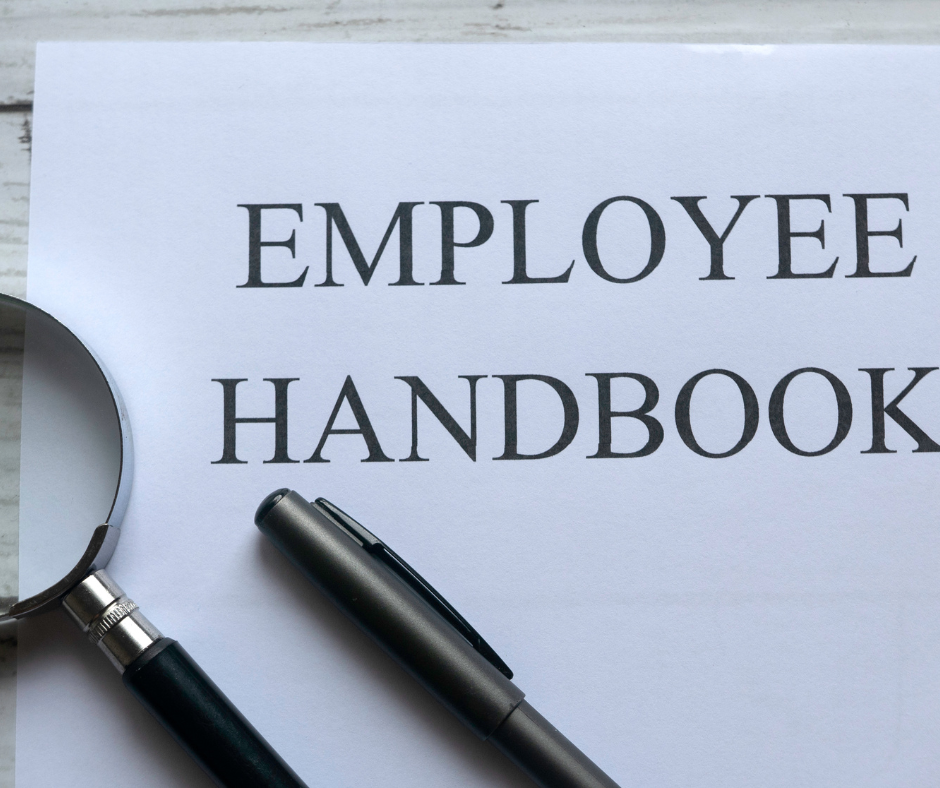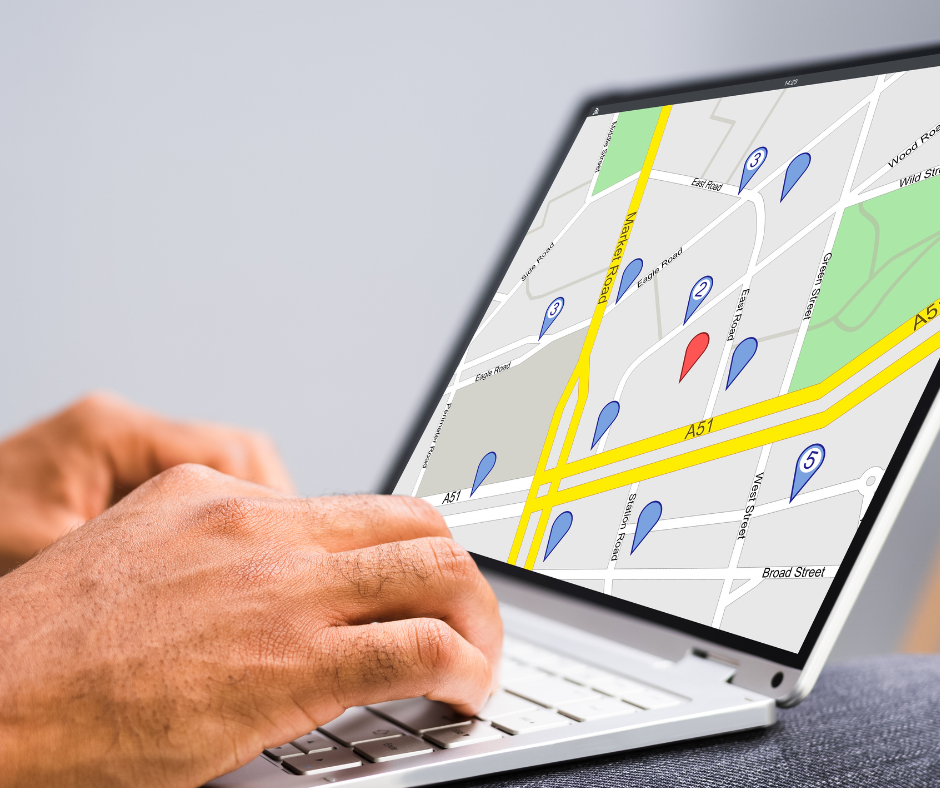
The Civilian PCS Handbook serves as a comprehensive guide for individuals undergoing a Permanent Change of Station (PCS) in the civilian sector. A PCS refers to the relocation of an individual and their accompanying household due to a change in their job assignment. This handbook aims to provide essential information and guidance to ensure a smooth and successful transition during this process.
Understanding the purpose of a PCS is crucial before embarking on the journey. It involves relocating to a new location for work-related reasons, such as a new job assignment or promotion. The purpose of a PCS is to facilitate the transfer of employees while minimizing disruptions to their professional and personal lives.
Proper preparation is key to a successful civilian PCS. This includes gathering important documents and records, such as identification papers, medical records, and financial documents. Notifying relevant parties, such as employers, schools, and utility providers, is also essential to ensure a seamless transition. creating a moving timeline helps to prioritize tasks and ensure everything is completed in a timely manner.
Choosing a new location is an important aspect of a civilian PCS. Factors such as the cost of living, schools, and amenities should be carefully considered. Researching housing options is also crucial to find a suitable residence in the new location that meets the needs and preferences of the individual and their family.
Packing and moving belongings require careful planning and organization. Creating an inventory checklist helps to keep track of items during the packing process. Properly organizing and labeling boxes ensures that items can be easily located upon arrival at the new location. Individuals should also consider whether to hire professional movers or opt for a DIY moving approach depending on their specific needs and budget. shipping and transportation arrangements should be made in advance to ensure the safe and timely arrival of belongings.
By following the guidelines outlined in the Civilian PCS Handbook, individuals can navigate the challenges of a permanent change of station effectively and ensure a successful transition to their new location.

What is a PCS ?
A PCS, or Permanent Change of Station, is a term often used in the military to describe a relocation to a new duty location. In this section, we’ll delve into the purpose of a PCS and why it plays a crucial role in military personnel’s lives. We’ll uncover the essential aspects of understanding the true significance and impact of a PCS, shedding light on how it affects individuals and their families. Get ready to uncover the ins and outs of this pivotal military transition.
Understanding the Purpose of a PCS
The purpose of the Permanent Change of Station (PCS) process is to facilitate the relocation of civilian employees to a new duty location. It allows for the redistribution of personnel to meet organizational needs, promote professional development, and enhance employee well-being. Understanding the purpose of a PCS is essential for employees to approach the process positively and take advantage of the opportunities it presents. Proactively gathering necessary information and seeking guidance can ensure a successful transition.
Preparing for a Civilian PCS
Preparing for a civilian PCS? Let’s kickstart the process by gathering your important documents and records, notifying the relevant parties, and creating a moving timeline. Get ready to dive into the nitty-gritty of organizing your move, so you can breeze through this transition with ease. Remember, it’s all about staying organized and ensuring a smooth relocation experience. So, let’s dive in and get you on the right track!
Gathering Important Documents and Records
When preparing for a civilian permanent change of station (PCS), it is essential to gather all important documents and records. To ensure a smooth and organized PCS, follow these steps:
1. Create a checklist: Make a list of all the necessary documents and records that you will need.
2. Collect identification documents: Gather up-to-date and valid passports, driver’s licenses, social security cards, and birth certificates.
3. Gather financial documents: Collect bank statements, tax returns, pay stubs, and investment records. These documents are necessary for any financial transactions or changes that may occur during your PCS.
4. Obtain medical records: Reach out to your healthcare providers and request copies of your medical histories, immunization records, as well as any prescriptions or medications you may need.
5. Request educational records: If you have school-aged children, ask for copies of their report cards, transcripts, and any special education documentation they may have.
6. Collect housing-related documents: If you are moving to a new location, gather any rental agreements, mortgage papers, or lease contracts that may be required when searching for new housing.
7. Retrieve insurance policies: Obtain copies of your health, auto, and home insurance policies. Keep them easily accessible during your transition.
8. Gather legal documents: Collect your will, power of attorney, marriage license, and divorce papers (if applicable). These documents may be required in various situations throughout your PCS.
9. Gather vehicle records: If you plan to take your vehicle with you, collect the registration, insurance, and maintenance records for it.
By following these steps and gathering all your important documents and records, you can ensure a smooth and organized civilian PCS.
Notifying Relevant Parties
When preparing for a civilian PCS (Permanent Change of Station), it is important to promptly notify all relevant parties about your upcoming move. This includes notifying your employer, landlord or rental agency, utility companies, financial institutions, schools or daycare centers, healthcare providers, and insurance companies. By informing these parties in a timely manner, you can ensure a smooth transition and minimize disruptions during your move.
Creating a Moving Timeline
Creating a moving timeline is crucial for a civilian PCS. It keeps you organized and ensures all necessary tasks are completed. Here are the steps to follow when creating your moving timeline:
- Notify your employer: Inform them about your move and discuss any necessary paperwork or procedures.
- Research moving companies: Start researching and contacting companies to get quotes and schedule your move.
- Set a moving date: Determine the date, considering lease agreements, school schedules, and availability of moving services.
- Inventory your belongings: Take stock of all items you will be moving and create a detailed checklist. This helps determine the truck size and is useful for insurance purposes.
- Pack non-essential items: Begin packing items you won’t need before the move, like seasonal clothing or decorations.
- Change your address: Update it with the post office, your bank, credit card companies, and other relevant organizations. Also, notify friends and family of your new address.
- Arrange for utilities: Contact your current utility providers to schedule disconnection at your old home and connection at your new home.
- Obtain necessary documents: Gather important documents like passports, birth certificates, and medical records. Keep them in a safe place for easy access during the move.
- Plan for travel arrangements: If you’re moving a long distance, make arrangements for yourself and your family, including flights or hotel reservations if needed.
- Delegate tasks: Assign specific tasks to family members or friends to help with the moving process, such as packing rooms or organizing pet transportation.
By creating a moving timeline and following these steps, you can ensure a smooth and organized transition to your new location. Planning ahead will alleviate stress and prevent last-minute rushes or forgotten tasks.

Choosing a New Location
Choosing a new location can be an exciting yet daunting task. In this section, we will dive into the factors that need to be considered, such as the cost of living, schools, and amenities. We will also explore the importance of researching housing options in the new location. So let’s embark on this journey of finding the perfect place that aligns with your needs and preferences.
Considering Factors such as Cost of Living, Schools, and Amenities
Considering Factors such as Cost of Living, Schools, and Amenities
When choosing a new location for your Civilian PCS, keep in mind important aspects such as cost of living, schools, and amenities.
1. Cost of living: Research the cost of living in different areas to determine if it aligns with your budget. Consider factors like housing prices, transportation expenses, and overall affordability. Look for locations with manageable living costs that suit your financial needs.
2. Schools: The quality of schools in the new location is crucial, especially if you have children or plan to have them in the future. Research school districts and educational opportunities available in the area. Look for reputable schools that offer a strong curriculum and extracurricular activities for a well-rounded education.
3. Amenities: Consider the amenities important to your lifestyle, such as access to parks, recreational facilities, shopping centers, or cultural attractions. Assess the availability of amenities that enhance your quality of life and match your preferences.
By carefully considering these factors, you can ensure the new location for your Civilian PCS meets your needs and provides a positive living experience. Remember to prioritize each factor based on your needs and make an informed decision for your overall well-being and satisfaction.
Suggestions for a successful PCS:
– Start researching and planning early to allow ample time for important decisions.
– Seek recommendations and insights from the local community.
– Create a detailed checklist to stay organized throughout the process.
– Communicate with your employer or HR department to access additional resources or support.
– Create a budget to effectively manage expenses during the move.
– Stay flexible and open-minded, as unexpected circumstances may arise.
– Take the time to explore your new surroundings and embrace the opportunities that come with a change in location.
By following these suggestions and considering the relevant factors, you can ensure a smooth and successful transition during your Civilian PCS.
Moreover, if you want to understand how fast food companies accommodate their employees during their transition period, read our Hardee’s employee handbook.
Researching Housing Options in the New Location
Researching Housing Options in the New Location
When researching housing options in a new location for your civilian PCS, consider the cost of living, proximity to schools, and available amenities.
– Cost of living: Research the average cost of housing in the area to ensure it aligns with your budget. Compare rental and housing prices for affordability.
– Schools: Investigate the quality of schools in the area, looking for high ratings and proximity to potential housing options.
– Amenities: Consider important amenities like grocery stores, healthcare facilities, parks, and recreational areas. Research their availability to choose a suitable location.
– Housing options: Explore different types of housing (apartments, houses, townhouses), considering size, layout, and features that meet your needs.
– Neighborhood safety: Research safety in the neighborhoods you’re considering. Look for low crime rates and a sense of security for a comfortable living environment.
Thoroughly researching housing options in the new location, considering these factors, analyzing your needs and preferences, will help you make an informed decision that suits your requirements for your civilian PCS.

Packing and Moving
Looking to master the art of packing and moving? In this section, we’ll uncover the secrets to a hassle-free relocation. From creating an inventory checklist to effectively organizing and labeling boxes, we’ve got you covered. Plus, we’ll weigh the pros and cons of hiring professional movers versus taking on the task yourself. Get ready to conquer the moving process with ease and efficiency. Say goodbye to stress and hello to a successful move!
Creating an Inventory Checklist
Creating an inventory checklist is crucial for packing and moving during a civilian PCS. It guarantees that all belongings are accounted for and well-organized. Here is a step-by-step guide to assist you:
1. Start early: Initiate your checklist well in advance of the moving date. This allows ample time to thoroughly go through your belongings and create a comprehensive list.
2. Room by room: Make a note of items in each room that will be packed and moved, including furniture, appliances, electronics, and personal belongings.
3. Categorize items: Group similar items together to make tracking easier, such as kitchen items, clothing, and books.
4. Label and number: Allocate a unique number to each item and label them accordingly. This simplifies the process of locating items when unpacking.
5. Note condition: Record the condition of each item on the checklist. This will be beneficial for insurance claims in case any damage occurs during the move.
6. Photograph or video: Document valuable or fragile items by taking pictures or videos as additional proof.
7. Update as needed: Continuously update the checklist as you pack and load boxes onto the moving truck. Note which items are placed in each box.
8. Keep a copy: Make multiple copies of the checklist and store them in a secure place. It is also recommended to have a digital copy for easy access.
Creating an inventory checklist ensures a seamless transition during a civilian PCS. By following these steps, you can avoid loss or misplacement of items during the move.
Organizing and Labeling Boxes
When it comes to organizing and labeling boxes for your PCS move, a systematic approach is key. It’s important to follow these steps in order to effectively organize and label your boxes:
1. Sort and declutter: Before you begin packing, take the time to go through your belongings and decide what you want to keep, what you want to donate, and what you want to discard. This will help minimize the number of items you need to pack and make it easier to stay organized.
2. Categorize items: When packing, group similar items together based on their type or function. For example, you can have separate categories for kitchenware, books, clothing, electronics, and so on. This will make it easier to locate items later on.
3. Use uniform-sized boxes: Invest in sturdy moving boxes that are all the same size. This will make it easier to stack and organize the boxes in the moving truck, and it will also help save space.
4. Label each box: Use a permanent marker to write a brief description of the contents of each box, as well as the room that it belongs to. Being specific with your labeling will make the unpacking process much smoother and more efficient.
5. Color-code the boxes: Consider using different colored labels or stickers for each room. This will provide a visual cue, making it easier to identify which boxes go in which room.
6. Create an inventory list: Keep a detailed list of the contents of each box. This will help you keep track of your belongings during the move and prevent anything from getting misplaced.
7. Handle fragile items with care: If you have fragile items, be sure to use special packing materials such as bubble wrap or packing paper. Clearly mark these boxes as “fragile” to ensure they receive extra care during the move.
8. Keep essentials separate: Pack a separate box with all of your immediate essentials, such as toiletries, clothes, and important documents. Label this box as “Open first” to easily identify it when you arrive at your new home.
By following these steps and effectively organizing and labeling your boxes, your PCS move will be much smoother and less stressful.
Hiring Professional Movers vs. DIY Moving
Hiring Professional Movers vs. DIY Moving
When moving for a Civilian PCS, you can choose to hire professional movers or do it yourself. Consider the following factors to help you decide:
1. Cost: Hiring professional movers can be more expensive than DIY moving. Compare the costs of both options and consider your budget.
2. Time and effort: Moving is time-consuming and physically demanding. Professional movers can handle everything from packing to loading and unloading, saving you time and effort.
3. Expertise and experience: Professional movers have the skills and experience to handle your belongings safely. They are trained in packing fragile items and ensuring everything arrives undamaged at your new location.
4. Convenience: Hiring movers makes the moving process more convenient. They can provide packing supplies, disassemble and reassemble furniture, and take care of logistics.
5. Insurance coverage: Professional moving companies typically offer insurance to protect your belongings during the move. This provides peace of mind in case of any unfortunate incidents.
6. DIY control: If you prefer full control over the moving process, DIY moving allows you to make decisions and handle your belongings personally.
7. Flexibility and customization: DIY moving offers more flexibility in choosing the timeline and allows you to customize your moving experience according to your preferences.
Consider your specific needs, budget, and personal circumstances to determine whether hiring professional movers or DIY moving is the best option for your Civilian PCS.
For a broader perspective on various organizational strategies, you can also delve into the employee handbook of Performance Food Group here.

Shipping and Transportation for PCS
Moving to a new location can be both exciting and overwhelming. In this section, we will focus on one crucial aspect that can make or break your civilian PCS experience: shipping and transportation. We’ll dive into the nitty-gritty details of understanding orders, navigating tax information, and the available payment services. Whether you’re a seasoned mover or a newbie to the PCS world, these sub-sections will provide you with vital insights to ensure a smooth and hassle-free transition to your new destination.
Understanding Orders
Understanding Orders in a Civilian PCS (Permanent Change of Station) is essential for a smooth relocation. Orders are official documentation issued by the military or government agency, outlining the details and requirements of the move. Here are key points to consider:
1. Orders provide crucial information: The orders specify the destination, reporting date, assignment duration, and any additional instructions or considerations. Thoroughly reading and comprehending the orders ensures compliance and proper planning.
2. Follow instructions accurately: Orders outline the exact procedures and guidelines for the PCS process. Adhering to these instructions avoids complications or delays. Note specific deadlines, paperwork requirements, and necessary documentation to facilitate a successful transition.
3. Address discrepancies promptly: If there are concerns or discrepancies with the orders, seek clarification from the issuing authority or appropriate personnel. Promptly addressing issues prevents misunderstandings and ensures order accuracy.
4. Understand entitlements and benefits: Orders often contain information about transportation, per diem allowances, and housing arrangements. Understanding these benefits helps make informed decisions and utilize available resources.
5. Maintain copies for reference: Make multiple copies of the orders and keep them in a secure location. These copies serve as reference points throughout the PCS process and for future administrative needs.
6. Communicate with relevant parties: Inform the transportation office, housing office, and any other designated contacts. This ensures a coordinated effort and assistance from the appropriate personnel when needed.
By understanding and following the orders provided for a Civilian PCS, individuals can efficiently navigate the relocation process.
Tax Information for Civilian PCS
When it comes to tax information for civilian PCS, consider the following:
– Understand tax regulations: Familiarize yourself with tax laws for your specific situation during a civilian PCS. Know the rules for both your current and new location.
– State tax implications: Different state tax rules may apply depending on the state you are moving to or from. Some states have no income tax, while others have provisions for military personnel or civilians moving for a PCS.
– Military tax benefits: Take advantage of tax benefits available to military personnel and their families, such as deductions for moving expenses or tax-free allowances.
– Keep track of expenses: Maintain detailed records of expenses related to your PCS, including moving costs, temporary lodging, and travel expenses. These records are essential for filing tax returns.
– Seek professional advice: Consult with a tax professional or relevant tax authorities if you have any tax-related questions during your civilian PCS. They can provide personalized advice and ensure compliance with tax obligations.
In 1861, the United States implemented its first permanent income tax system as a response to financial strain caused by the Civil War. The Revenue Act of 1861 established a progressive tax structure, with rates ranging from 3% to 5% for incomes over $800. This marked the beginning of income taxation as a regular source of government revenue in the United States. The tax system has since undergone many changes and amendments, shaping the modern tax laws we abide by today. From the introduction of the Internal Revenue Service (IRS) in 1862 to major tax reforms in the 20th and 21st centuries, tax history in the United States is a complex and evolving narrative. Understanding and navigating the tax system is important during a civilian PCS as well as for compliance and the functioning of government.
Payment Services for Civilian PCS
Payment services for civilian PCS involve several important factors. Here are key considerations:
1. Research available payment options: Understand different payment services, such as direct deposit, physical checks, or electronic funds transfers.
2. Familiarize yourself with payment schedules: Determine payment timing to plan your budget.
3. Ensure timely and accurate payments: Provide required information and documentation promptly to avoid delays or errors.
4. Verify payment amounts: Double-check each payment for accuracy and promptly address any discrepancies or issues.
5. Maintain financial records: Keep track of all payments received during your civilian PCS to reconcile discrepancies and provide documentation if needed.
During my civilian PCS, I encountered payment issues despite providing all necessary information. My payments were delayed for several weeks. Frustrated, I contacted the payment service provider and HR department. Through persistent communication, I identified and resolved the problem. This experience taught me the importance of proactively advocating for myself regarding payment services during a PCS. Payment Services for Civilian PCS play a crucial role in ensuring smooth financial transactions and avoiding unnecessary complications.
If you are interested in how various renowned organizations operate and want to develop one for your business, here is our employee handbook template to make the job easier for you.
Frequently Asked Questions
What is the Civilian PCS Entitlement Guide?
The Civilian PCS Entitlement Guide is a resource provided by the Defense Finance and Accounting Service (DFAS) of the U.S. Department of Defense. It offers detailed information on various entitlements and procedures related to civilian Permanent Change of Station (PCS).
How can I access the Civilian PCS Entitlement Guide?
The Civilian PCS Entitlement Guide can be accessed on the official website of the DFAS, which is a secure .mil website. You can visit the website at [insert DFAS website URL] to find the guide.
What topics are covered in the Civilian PCS Entitlement Guide?
The Civilian PCS Entitlement Guide covers various topics including customer service, resources, understanding orders, tax information, and submitting advance or settlement vouchers. It also provides information on taxable entitlements, withholding tax allowance, travel advance entitlement, house hunting trips, en route travel, temporary quarters subsistence expenses, miscellaneous expense allowance, movement and storage of household goods, privately owned vehicle shipment and drop off/pick up, real estate, home marketing incentive payments, unexpired lease, renewal agreement travel, and relocation income tax allowance.
Can I track the status of my vouchers related to civilian PCS entitlements?
Yes, the DFAS website offers a “Check Voucher Status” feature that allows users to track the status of their vouchers. You can use this feature to stay updated on the progress of your vouchers and payments.
Where can I provide feedback regarding civilian PCS entitlements?
You can provide feedback regarding civilian PCS entitlements on the DFAS website. There is a section dedicated to customer service where you can submit your feedback and suggestions. The DFAS values user feedback and strives to continuously improve its services.
Are there resources available to answer frequently asked questions about civilian PCS entitlements?
Yes, the DFAS website provides answers to frequently asked questions. You can find a section dedicated to FAQs where you can search for answers to common queries. This can be helpful in quickly finding information and resolving any doubts you may have.
Important Disclaimer:
The article presented here does not serve as a representation of the company’s actual employee handbook mentioned in this article.
Our discussions and insights regarding employee handbook are based on assumptions about what may be considered significant in this companies’ policies. These assumptions are drawn from available information and industry knowledge. Readers are advised that the content provided is for informational purposes only and should not be construed as an exact reflection of any company’s official policies or procedures. For precise and accurate details regarding a company’s employee handbook, individuals should refer directly to the company’s official documentation or consult with appropriate representatives.
Please be aware that the content on this page has been generated by using artificial intelligence language models and may contain errors, inconsistencies, or outdated information. It is provided as-is without any warranties or guarantees of accuracy. We strongly recommend using this content as a starting point for further research. We disclaim any liability for damages or losses resulting from the use or reliance on this content.